Trivia Browser

subdirectory_arrow_right Banjo-Kazooie (Game)
▲
1
▼
According to two interviews with Famitsu in 1998, Shigeru Miyamoto cited Rare's exceptional graphical and technical work on Banjo-Kazooie as a factor for why The Legend of Zelda: Ocarina of Time was delayed, as Miyamoto and his team felt they needed to compete with it. He thought a 3D action platformer of its kind running that well on Nintendo 64 hardware was "so amazing that we don't want to be outdone", and "if Mario's a makunouchi bento, Banjo's a deluxe makunouchi bento." Some reviews of Ocarina of Time at its release compared its graphics, frame rate and textures with Banjo-Kazooie's, and felt Ocarina of Time did not perform as well in that field.
Shigeru Miyamoto Famitsu interview - April 17, 1998:
https://web.archive.org/web/20090129154359/http://miyamotoshrine.com/theman/interviews/170498.shtml
Shigeru Miyamoto Famitsu interview - May 8, 1998:
https://x.com/m0m0_0ssrr_/status/1847144999642890416
https://x.com/gosokkyu/status/1847465155858477459
IGN 1998 review:
https://web.archive.org/web/20121009233109/http://www.ign.com/articles/1998/11/26/the-legend-of-zelda-ocarina-of-time-review
Electronic Gaming Monthly Issue #115 (February 1999) (Page 166 in the magazine):
https://archive.org/details/electronicgamingmonthlyissue115february1999/page/n179/mode/2up
https://web.archive.org/web/20090129154359/http://miyamotoshrine.com/theman/interviews/170498.shtml
Shigeru Miyamoto Famitsu interview - May 8, 1998:
https://x.com/m0m0_0ssrr_/status/1847144999642890416
https://x.com/gosokkyu/status/1847465155858477459
IGN 1998 review:
https://web.archive.org/web/20121009233109/http://www.ign.com/articles/1998/11/26/the-legend-of-zelda-ocarina-of-time-review
Electronic Gaming Monthly Issue #115 (February 1999) (Page 166 in the magazine):
https://archive.org/details/electronicgamingmonthlyissue115february1999/page/n179/mode/2up
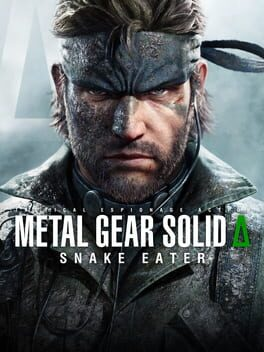
subdirectory_arrow_right Metal Gear (Franchise)
▲
1
▼
In a 2024 Famitsu interview, Metal Gear Solid Delta: Snake Eater producer Noriaki Okamura expressed uncertainty about his team developing future remakes or installments in the series. He felt they could not make remakes of the first two Metal Gear games or Metal Gear Solid in the same way they remade Snake Eater, and that they would have to make many new parts, and significant changes and deviations from the original games' playstyle to meet contemporary standards. As for new installments in the series, he felt this depended on the feedback they would get from the Snake Eater remake and a concerted effort with Konami to preserve the longevity of the series:
"The number of staff members who worked with the original staff at the time is dwindling considerably. Before everyone who was involved in the original is gone, we need to create a path to preserve the Metal Gear series for 10 or 50 years into the future. I think this is something we have to do."
『メタルギア ソリッド デルタ』国内初インタビュー。原作の感動そのものを新世代へ届ける。『MGS』シリーズの今後も訊いた【TGS2024】:
https://www.famitsu.com/article/202410/19148
Translated tweet by @Genki_JPN:
https://www.twitter.com/Genki_JPN/status/1841640650359656919
Konami Explains Why Snake Eater Was Chosen for Remake Over Metal Gear Solid 1:
https://gameinfinitus.com/game-news/konami-explains-why-snake-eater-was-chosen-for-remake-over-metal-gear-solid-1/
https://www.famitsu.com/article/202410/19148
Translated tweet by @Genki_JPN:
https://www.twitter.com/Genki_JPN/status/1841640650359656919
Konami Explains Why Snake Eater Was Chosen for Remake Over Metal Gear Solid 1:
https://gameinfinitus.com/game-news/konami-explains-why-snake-eater-was-chosen-for-remake-over-metal-gear-solid-1/
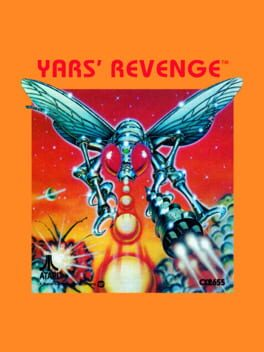
▲
2
▼
The graphics for the Neutral Zone are made up of bits and bytes of the actual program code for Yars' Revenge, laid out vertically, and counter-scrolling over each other. The game's creator Howard Scott Warshaw recalled in an interview with Digital Press that Atari feared showing the game's code on-screen would be a potential copyright violation, but Warshaw explained to them that "besides the scrolling, there was some X-Y and random color processing being done to it" to prevent the raw code from being displayed, stating that "if somebody could get the code from that, then they deserved it!" This same technique was employed by Retro Studios to create static noise textures during the development of the Nintendo GameCube game Metroid Prime.
Digital Press interview:
https://www.digitpress.com/library/interviews/interview_howard_scott_warshaw.html
Tweets in response to similar method in Metroid Prime, including reconfirmation of Neutral Zone backstory from Howard Scott Warshaw:
https://x.com/WaWaYanickP/status/1594563685996953600
https://x.com/HSWarshaw/status/1594590132639653889
https://www.digitpress.com/library/interviews/interview_howard_scott_warshaw.html
Tweets in response to similar method in Metroid Prime, including reconfirmation of Neutral Zone backstory from Howard Scott Warshaw:
https://x.com/WaWaYanickP/status/1594563685996953600
https://x.com/HSWarshaw/status/1594590132639653889
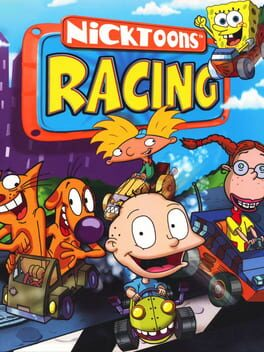
▲
1
▼
The arcade release of Nicktoons Racing is a modified version of the PC release running on a Windows XP computer bolted into the cabinet. Some modifications are made for the arcade setting, such as a selectable time limit, but the biggest changes are the omissions of the game's opening cutscene, Stimpy from The Ren & Stimpy Show as a racer, and the Gritty Kitty item from that series. While the Race Madness track also based on the series remains in the arcade version of the game, Stimpy and the Gritty Kitty item were most likely removed due to it releasing in 2003, the same year as the adult-oriented Ren & Stimpy: Adult Party Cartoon reboot. The opening cutscene appears to have been removed due to it requiring Windows Media Player, but may have also been removed due to difficulty in editing Ren & Stimpy elements out of the opening cutscene. The removed content is still within the files, and simply disabled.
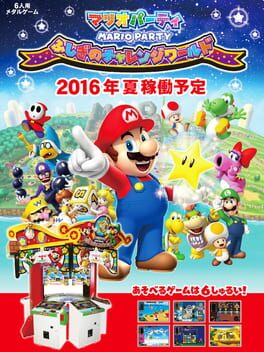
▲
1
▼
Although it was only released in Japan, there were plans for an international version of Mario Party: Challenge World slated for release in Spring 2018. A demo for an English-translated version was shown off at the 2017 Attractions Expo for the International Association of Amusement Parks and Attractions (IAAPA) using the Japanese version's six-player roulette design. However, this release date came and went with no further announcements. On May 30, 2018, the game's manufacturer Raw Thrills accidentally uploaded and quickly delisted a video on their YouTube channel showing the international version's boot-up process (using a Windows OS) with the game's title screen fully translated into English, before crashing. In October, photos were leaked to the arcade news blog Arcade Heroes revealing that the international version was still being tested, but sported a heavily revamped cabinet design that ditched the roulette and redesigned the game for only three players. This was most likely due to its original design as a roulette gambling game keeping it from being sold to most American arcades. After more radio silence and it missing IAAPA's 2018 Expo, Raw Thrills confirmed to Arcade Heroes in April 2019 that the game was cancelled, and its few prototype cabinets were sold off to select luxury entertainment centers. One confirmed location housing it as of April 2019 was the Tulsa, Oklahoma branch of Cinergy Entertainment.
Mario Party: Challenge World - IAAPA 2017 demo:
https://www.youtube.com/watch?v=8b9Fk7GKYUA
Reuploaded Raw Thrills bootup crash video:
https://www.youtube.com/watch?v=TTee-1A5U28
Arcade Heroes articles:
https://arcadeheroes.com/2018/10/09/mario-party-challenge-spotted-on-test-almost-a-year-after-reveal/
https://arcadeheroes.com/2019/04/27/newsbytes-repro-star-wars-yoke-marble-carnival-cosmotrons-unboxing-exa-arcadia-mario-party-updates/
https://www.youtube.com/watch?v=8b9Fk7GKYUA
Reuploaded Raw Thrills bootup crash video:
https://www.youtube.com/watch?v=TTee-1A5U28
Arcade Heroes articles:
https://arcadeheroes.com/2018/10/09/mario-party-challenge-spotted-on-test-almost-a-year-after-reveal/
https://arcadeheroes.com/2019/04/27/newsbytes-repro-star-wars-yoke-marble-carnival-cosmotrons-unboxing-exa-arcadia-mario-party-updates/
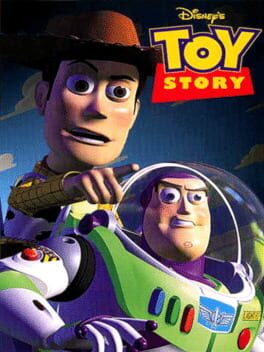
▲
1
▼
 The title and ending themes of Toy Story on the Sega Genesis (which are covers of Randy Newman's "Strange Things" and "You've Got a Friend in Me" from the movie respectively) use the Commodore Amiga's MOD sound chip, the only Genesis game to use it. Due to the intensive CPU usage caused by the sound chip player, MOD files are only able to be played on static screens, and the rest of the game uses the GEMS sound driver, the standard practice for Western-developed Genesis games. Because of this, any MOD file can be imported into the title or ending of Toy Story, though the sound player is specialized to the Toy Story music and does not play any other MOD file perfectly.
The title and ending themes of Toy Story on the Sega Genesis (which are covers of Randy Newman's "Strange Things" and "You've Got a Friend in Me" from the movie respectively) use the Commodore Amiga's MOD sound chip, the only Genesis game to use it. Due to the intensive CPU usage caused by the sound chip player, MOD files are only able to be played on static screens, and the rest of the game uses the GEMS sound driver, the standard practice for Western-developed Genesis games. Because of this, any MOD file can be imported into the title or ending of Toy Story, though the sound player is specialized to the Toy Story music and does not play any other MOD file perfectly.
The Cutting Room Floor article:
https://tcrf.net/Notes:Toy_Story_(Genesis)
YouTube playlist featuring Toy Story music mod content:
https://www.youtube.com/playlist?list=PLxU69p73hTabzTOibl2zXFDhWFukJi2pz
https://tcrf.net/Notes:Toy_Story_(Genesis)
YouTube playlist featuring Toy Story music mod content:
https://www.youtube.com/playlist?list=PLxU69p73hTabzTOibl2zXFDhWFukJi2pz
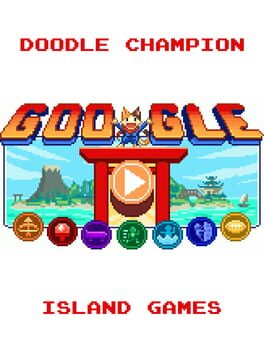
▲
0
▼
The game originally began as a smaller interactive Google Doodle game to celebrate the 2020 Summer Olympics and Paralympics in Tokyo, but after the events were delayed to 2021, Google were effectively given another year to expand it into a full-fledged video game with at least two and a half hours of content. This made it the largest interactive Google Doodle produced in the company's history. Their engineers were surprised at the large amount of side quests and dialogue they were able to fit into the game, but they struggled to get the game to run on mobile phones, tablets and desktop computers as it needed to be displayed on Google's front page. They managed to get the game to remember save data by saving it to users' local storage, so the game could be continued at any time. It is not fully known what the game's technological specs are, but the level design and sprite animations were created by Google in Adobe Animate, while the animated cutscenes were created by Japanese animation studio Studio 4°C in Toon Boom Harmony and Adobe After Effects.
Behind-the-scenes video:
https://www.youtube.com/watch?v=hy7tHQUR3TM
Washington Post article:
https://www.washingtonpost.com/video-games/2021/08/13/olympics-google-doodle-game/
How Long to Beat page for Doodle Champion Island Games:
https://howlongtobeat.com/game/95964
https://www.youtube.com/watch?v=hy7tHQUR3TM
Washington Post article:
https://www.washingtonpost.com/video-games/2021/08/13/olympics-google-doodle-game/
How Long to Beat page for Doodle Champion Island Games:
https://howlongtobeat.com/game/95964
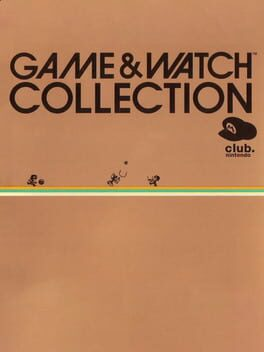
▲
1
▼
When run on a Nintendo DSi or Nintendo 3DS, Action Replay DSi's icon and title will be listed as Game & Watch Collection. This is a way of working around the DSi's bootleg game protection, which is done by having a built-in whitelist of every official DS game, which Action Replay circumvents by tricking the device into thinking Game & Watch Collection is being played. Action Replay DSi contains almost every byte of data from Game & Watch Collection, but jumbled into an unplayable format.
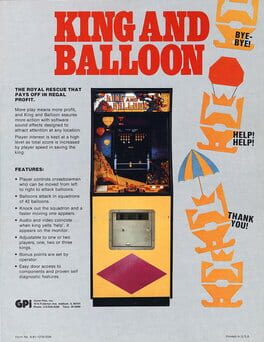
▲
1
▼
King & Balloon was the first game to be produced by Namco using a surplus of Galaxian PCB boards they manufactured. According to co-director Shigeru Yokoyama, he wanted the game to have an autofire feature with "tons of bullets" to reflect the "panicked mindset" of the player seeing the King get taken by balloons. However, the Galaxian PCB boards could not handle either of these ideas since Galaxian did not have an autofire feature to begin with, and the bullets were made faster than those in Galaxian as a compromise.
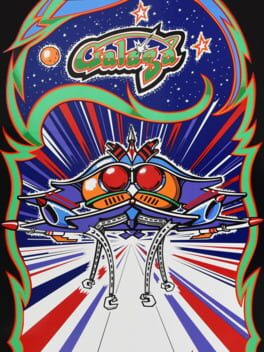
▲
2
▼
Galaga was originally conceived as a way to utilize Galaxian's PCB boards after they were overmanufactured, but while creating a partially-complete prototype, R&D engineer (and future Namco president) Shigeichi Ishimura decided that Galaga should use its own unique PCB hardware.

▲
1
▼
In a June 13th, 2024 interview with the Dragami Games CEO Yoshimi Yasuda published on the Gematsu website, he stated that in 2021, he asked Tomo Ikeda, one of the directors he led in the development team for the original Lollipop Chainsaw, to help with the game's remake Lollipop Chainsaw RePOP, but Ikeda turned him down due to conflicts from already leading development on a different project at that time. Yasuda still expressed that he felt very proud of his former developers for advancing in the industry and maintained a good relationship with the original game's writer Masahiro Yuki, having spoken several times with him in 2023 about RePOP and the future of Lollipop Chainsaw. He described Yuki as "something like a repository of wisdom within the team" during development, and gave Yasuda lots of proactive and stimulating opinions that were reflected in RePOP. Yasuda stated that the agenda for RePOP was to "improve on the user-friendliness" and give a more fun experience for players that were left lacking in the original game. In order to do that, he contacted the engineers who worked on the original game to provide detailed development information, like how data was handled and special processing related to Unreal Engine 3, which directors and producers would not be able to provide, and called their support "especially indispensable".
Franchise: Sonic The Hedgehog
▲
4
▼
Sometimes when items are scanned at American gas stations, the sound effect when Sonic collects rings will play on the cash register. It is not known why this sound effect is used, but it's theorized that it stems from Sega's parent company, Sega Sammy Holdings, having some kind of involvement with Gilbarco Veeder-Root, an American technology company that produces point of sale/payment systems and fuel dispensers. The software used in cash registers produced by the company, Gilbarco Passport, is widely used at convenience stores across the United States and was developed by an unspecified third party, which could be Sega Sammy Holdings. The reason why the Sonic ring sound effect was specifically used is likely a result of the merger between Sega and Sammy Corporation allowing the latter to own the rights to some Sega IPs like Sonic the Hedgehog and primarily use them for pachinko machines.
Explanation on YouTube:
https://www.youtube.com/watch?v=VKa0U3CSTuA
Explanation on TikTok:
https://www.tiktok.com/@johnnybonegaming/video/7206110246652185898
https://www.youtube.com/watch?v=VKa0U3CSTuA
Explanation on TikTok:
https://www.tiktok.com/@johnnybonegaming/video/7206110246652185898
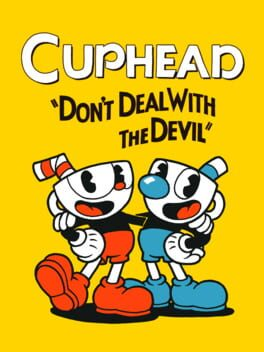
▲
2
▼
 In 2019, Studio MDHR and the multinational automotive company Tesla announced that a special port of Cuphead would be released for the Tesla Arcade digital store and would be playable on the company's Model S, Model X, and Model 3 vehicles. Due to storage limitations with the cars, the Tesla Arcade version only includes the stages in Inkwell Isle I. The game can only be played with a controller plugged into each vehicle's USB port, but can be played cooperatively with two players controlling Cuphead and Mugman. As part of the announcement, Studio MDHR released commemorative artwork of Cuphead and Mugman standing with a Model 3 car.
In 2019, Studio MDHR and the multinational automotive company Tesla announced that a special port of Cuphead would be released for the Tesla Arcade digital store and would be playable on the company's Model S, Model X, and Model 3 vehicles. Due to storage limitations with the cars, the Tesla Arcade version only includes the stages in Inkwell Isle I. The game can only be played with a controller plugged into each vehicle's USB port, but can be played cooperatively with two players controlling Cuphead and Mugman. As part of the announcement, Studio MDHR released commemorative artwork of Cuphead and Mugman standing with a Model 3 car.
Articles about Cuphead being added to Tesla cars:
https://gamerant.com/cuphead-tesla-vehicles/
https://www.ign.com/articles/2019/09/28/you-can-now-play-cuphead-on-your-tesla-car
https://www.eurogamer.net/you-can-now-play-cuphead-in-a-tesla
Studio MDHR and Tesla announcements:
https://twitter.com/StudioMDHR/status/1177305158470029314
https://www.tesla.com/blog/introducing-software-version-10-0
Playthrough:
https://www.youtube.com/watch?v=YQGKvVVEB2I
https://gamerant.com/cuphead-tesla-vehicles/
https://www.ign.com/articles/2019/09/28/you-can-now-play-cuphead-on-your-tesla-car
https://www.eurogamer.net/you-can-now-play-cuphead-in-a-tesla
Studio MDHR and Tesla announcements:
https://twitter.com/StudioMDHR/status/1177305158470029314
https://www.tesla.com/blog/introducing-software-version-10-0
Playthrough:
https://www.youtube.com/watch?v=YQGKvVVEB2I

▲
3
▼
Due to a programming error, the player has a random chance of accessing debug mode in Super Mario Bros. 3 (specifically the one from the NES version of the game, which is carried over to the Super Mario All-Stars port). The debug mode only activates if a value of 80 is stored at the RAM address 7E0160, which can be manually edited by a devkit.
The NES version initializes the equivalent RAM address to 00 whenever the game is turned on, preventing the player from encountering debug mode during the normal course of play. However, due to an oversight, this does not occur in the SNES version, resulting in Super Mario All-Stars reading whatever value is generated by the console itself. Because this value is randomized during bootup, this means that the game has a small chance of activating debug mode in Super Mario Bros. 3 on a retail unit. While the theoretical probability of this occurring is 1/256, it can vary depending on the console's build and the power grid that it is connected to.
The NES version initializes the equivalent RAM address to 00 whenever the game is turned on, preventing the player from encountering debug mode during the normal course of play. However, due to an oversight, this does not occur in the SNES version, resulting in Super Mario All-Stars reading whatever value is generated by the console itself. Because this value is randomized during bootup, this means that the game has a small chance of activating debug mode in Super Mario Bros. 3 on a retail unit. While the theoretical probability of this occurring is 1/256, it can vary depending on the console's build and the power grid that it is connected to.
The Cutting Room Floor articles:
https://tcrf.net/Super_Mario_All-Stars_(SNES)#Old_Debug_Mode
https://tcrf.net/Notes:Super_Mario_All-Stars
Supper Mario Broth video, the description of which includes an explanation for the oversight:
https://www.youtube.com/watch?v=AjiVoXiRo1M
https://tcrf.net/Super_Mario_All-Stars_(SNES)#Old_Debug_Mode
https://tcrf.net/Notes:Super_Mario_All-Stars
Supper Mario Broth video, the description of which includes an explanation for the oversight:
https://www.youtube.com/watch?v=AjiVoXiRo1M
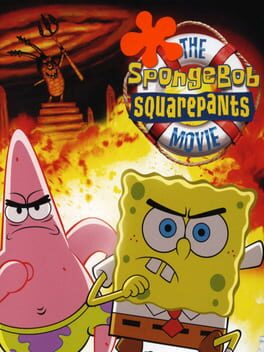
▲
1
▼
In 2012, The SpongeBob SquarePants Movie was ported to the PlayStation 3's PlayStation Network under the PlayStation 2 Classics line. However, it was taken down shortly afterwards with no official explanation. Audiences quickly inferred that the port's withdrawal was due to the poor reception it drew thanks to various emulation issues involved with it, though it may have also been due to THQ going bankrupt and Activision acquiring the license to make games based on Nickelodeon properties around the same time. Among these emulation issues, the 16:9 display (which was the default option) stretched the game rather than properly re-rendering it at a higher aspect ratio, the audio for in-engine cutscenes frequently stuttered and fell behind by up to a second, certain textures were noticeably blurry due to the game being displayed at a higher resolution than what it was designed for, and gameplay suffered from prominent input lag compared to the original release.
DidYouKnowGaming video:
https://www.youtube.com/watch?v=4CJoYsBRwrI
The Cutting Room Floor article:
https://tcrf.net/The_SpongeBob_SquarePants_Movie_(GameCube,_PlayStation_2,_Xbox)#PlayStation_3_Port
https://www.youtube.com/watch?v=4CJoYsBRwrI
The Cutting Room Floor article:
https://tcrf.net/The_SpongeBob_SquarePants_Movie_(GameCube,_PlayStation_2,_Xbox)#PlayStation_3_Port
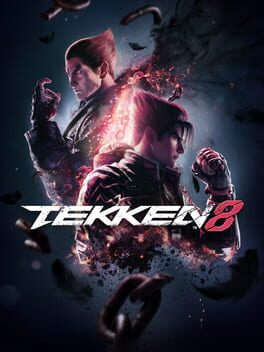
▲
1
▼
In an interview with the game's producer Katsuhiro Harada published in IGN on September 15th, 2022, Harada was asked about his experience developing a game in Unreal Engine 5 for the first time and some of the more subtle aspects of working with the engine. He responded:
"It's a very difficult question. From a developer's perspective, not just for us, but developers in general in the industry, it's different from the end users' impression, where kind of like an iPhone 4 was being used up until a certain date and then, "Okay, now the iPhone 5 is out, it's awesome, it's brand new, everything works so much better." That's kind of the impression that your average user has when this new Unreal Engine 5 comes out. But in reality, it's not that case at all. It's like it's a continuing process. Obviously, we didn't just start developing a game on UE5. UE5 was announced quite some time ago, but we haven't seen games for it yet.
So we started on UE4 and gradually started porting certain elements of the game over into UE5 and also confirming the results. Like, "Okay, oh wow, the graphic level on this particular area improved greatly." And then other areas as well – the things that are important for a fighting game: the response time…those kind of things are stuff that we've been porting out into the game and then figuring out what to expect in that area as well. And we’ve been working closely with Epic to figure out how to optimize some of those processes for input. So we're just starting and it's going to continue from now on."
So we started on UE4 and gradually started porting certain elements of the game over into UE5 and also confirming the results. Like, "Okay, oh wow, the graphic level on this particular area improved greatly." And then other areas as well – the things that are important for a fighting game: the response time…those kind of things are stuff that we've been porting out into the game and then figuring out what to expect in that area as well. And we’ve been working closely with Epic to figure out how to optimize some of those processes for input. So we're just starting and it's going to continue from now on."
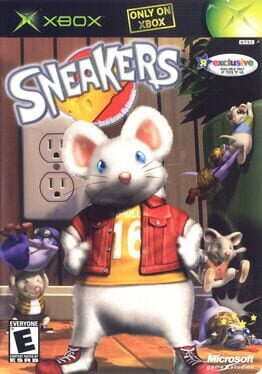
▲
1
▼
Sneakers' graphical style was originally going to look more like a picture book or two-dimensional cartoon, but after seeing a realistic fur CGI demonstration at SIGGRAPH, it was decided to use a more realistic style instead.

▲
3
▼
Dan Arey, a former Crystal Dynamics and Naughty Dog developer who worked on the second and third games in the series, praised the first game in a 1996 Retro Gamer magazine interview. Prior to joining Naughty Dog, he talked about how the game maintained its unique identity in the world of 3D platformers, even when faced with the groundbreaking influence of Super Mario 64. Arey emphasized that while Super Mario 64 embraced open-ended levels, programmer Andy Gavin and director Jason Rubin designed Crash Bandicoot to adhere to a more old-school, level-based structure while adding 3D depth to its platforming challenges by "going down 3D roads with occasional 2D side-wave elements, but everything was very focussed in terms of mechanics". Arey also expressed admiration for the game's technical achievements even before he joined Naughty Dog, which likely soon motivated him to do so:
"We saw some early demos when I was at Crystal Dynamics, and we were asking ourselves how they were getting so many polygons on the PlayStation. What they had done was pre-calculate the polygons you couldn't see from a fixed-camera viewpoint, so it looked like there were many more polygons being pushed on the system than ever before."
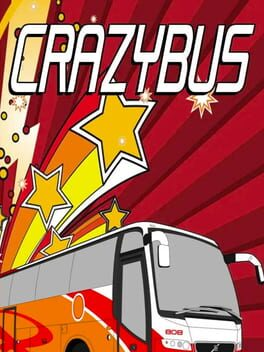
▲
2
▼
Although CrazyBus is often discussed or reviewed as if it were a real video game sold for money, and included in ROM sets and pirated cartridges with authentic games, it was actually intended as a simple tech demo by a beginning developer posted on a Sega Genesis modding forum in 2004.
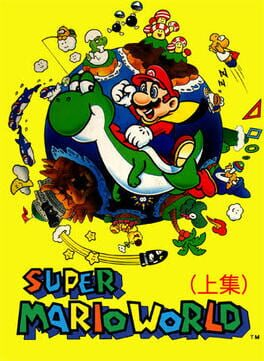
▲
1
▼
 Despite Yoshi being considered impossible to implement into an NES game by Nintendo engineers, Hummer Team's bootleg backport of Super Mario World managed to include a fully functional Yoshi, capable of eating with his tongue, coexisting with Mario's power-ups, and running off when hit.
Despite Yoshi being considered impossible to implement into an NES game by Nintendo engineers, Hummer Team's bootleg backport of Super Mario World managed to include a fully functional Yoshi, capable of eating with his tongue, coexisting with Mario's power-ups, and running off when hit.